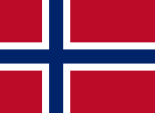mobile View, to the German Version tap the flag


- Außenbesitzung Norwegens im Nordatlantik
- own name: Svalbard, sometimes 'Spitsbergen'
• Flag
• Numbers and Facts
• History
• Origin of the Country's Name
Svalbard has no own flag. There is in use the flag of Norway:

National and merchant flag of Norway,
ratio = 8:11,
Source, by: Corel Draw 4






Numbers and Facts
Area: 23.561 square miles, thereof Spitzbergen (Vestspitzbergen) 14.546 sq.mi., North East Land (Nordaustlandet) 5.576 sq.mi.², Edge Island (Edgeøya) 1.959 sq.mi., Barents Island (Barentsøya) 497 sq.mi., Kvitsinsel (Kvitøya) 263 sq.mi., and Kong Karls Land, Prins Karls Forland, Kongsøya, Svenskøya, Wilhelmøya, Hopen and other, as well as the 125 mi. distant Bear Island (Bjørnøya, 69 sq.mi.)
Inhabitants: 2.583 (2017), thereof 2.145 Norwegians, 428 Russians, 10 Poles
Density of Population: 0,1 inh./sq.mi.
Main Place: Longyearbyen
official Language: Norwegian
other Languages: Russian
Currency: Norwegian currency
Time Zone: GMT + 1 h
Source: Wikipedia (DE)

1194 · first mention in documents as Svalbard
1596 · re-discovery by the Netherlander Willem Barents
1906 · John Munroe Longyear establishes the first mining housing estate (Longyearbyen)
1916 · Norway takes over the coal open-cast mining in Longyearbyen
9th of February 1920 · Statute of Spitsbergen, the archipelago becomes adjudged to Norway
1925 · Spitsbergen Treaty, 39 countries sign, but only Norway and the Soviet Union (legal successor: Russia) have claimed the rights of use
September 1945 · the German Wehrmacht weather station "Haudegen" surrendered as the penultimate unit of German troops infront of Norwegian troops on North-East Island
1962 · beginning of the decline of mining
Source: Wikipedia (DE)

Origin of the Country's Name
The name "Spitsbergen" was awarded to the archipelago by Willem Barents to remember the "pointy mountains" on the western coast. Nowadays there is in use this name only for the largest of the islands. The archipelago itself is called today "Svalbard". This is Old Nordic and means "cold coast".
Source: Wikipedia (DE)



![]()



